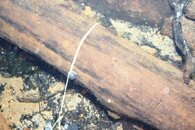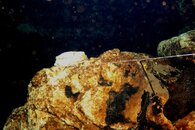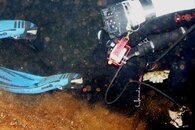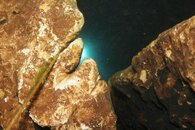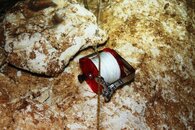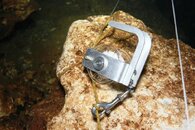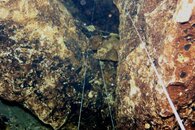It saddens and concerns me to see some practices that have been criticized in recreational scuba teaching are spreading in cave teaching as well.
Scuba courses were once lengthy and physically demanding. Then came the view that almost anyone can scuba dive, they don't need to know it all, or be that fit, or be that perfect underwater... the more the merrier. I agree with not placing too many barriers to people wanting to discover scuba diving, although I think things have gone too far.
But the same ideas are now being applied to more demanding dives and that's not good! Not only the risks to themselves are greater, but also to others as well as to an environment which had been so far more protected from damages.
I was thinking if the question about etiquette was due to divers reading about it in the books but then not experiencing and practising it during the courses... While it did happen to me on most training dives, I suspect the case is different in more crowded places like Florida. So it should have been drilled from the start! I did have some other teams in the water during some dives and that only made me want to be better! They were there to enjoy their dives and I didn't want to ruin their experience with my uncontrolled movements, bad line placement or a wrong kick here or there silting out the cave. It was bad enough we had to do some exercises where it's hard not to make some mess. And they'd be potential future buddies. I wanted them to see me working well during the course.
I wonder if we'll come to a time when, in the same way it's happening in rec diving, cards won't be worth much and divers will be asked to do check out dives.
I know of at least Ojamo mine, Finland, where there is an internal "certification" process and there was a mine in Germany for which a check dive was required for TDI cave divers, but the more recent rules I have seen already include those in the "ok to dive" list.
Maybe similar requirements are or should be in place in other dive sites?
Scuba courses were once lengthy and physically demanding. Then came the view that almost anyone can scuba dive, they don't need to know it all, or be that fit, or be that perfect underwater... the more the merrier. I agree with not placing too many barriers to people wanting to discover scuba diving, although I think things have gone too far.
But the same ideas are now being applied to more demanding dives and that's not good! Not only the risks to themselves are greater, but also to others as well as to an environment which had been so far more protected from damages.
I was thinking if the question about etiquette was due to divers reading about it in the books but then not experiencing and practising it during the courses... While it did happen to me on most training dives, I suspect the case is different in more crowded places like Florida. So it should have been drilled from the start! I did have some other teams in the water during some dives and that only made me want to be better! They were there to enjoy their dives and I didn't want to ruin their experience with my uncontrolled movements, bad line placement or a wrong kick here or there silting out the cave. It was bad enough we had to do some exercises where it's hard not to make some mess. And they'd be potential future buddies. I wanted them to see me working well during the course.
I wonder if we'll come to a time when, in the same way it's happening in rec diving, cards won't be worth much and divers will be asked to do check out dives.
I know of at least Ojamo mine, Finland, where there is an internal "certification" process and there was a mine in Germany for which a check dive was required for TDI cave divers, but the more recent rules I have seen already include those in the "ok to dive" list.
Maybe similar requirements are or should be in place in other dive sites?



